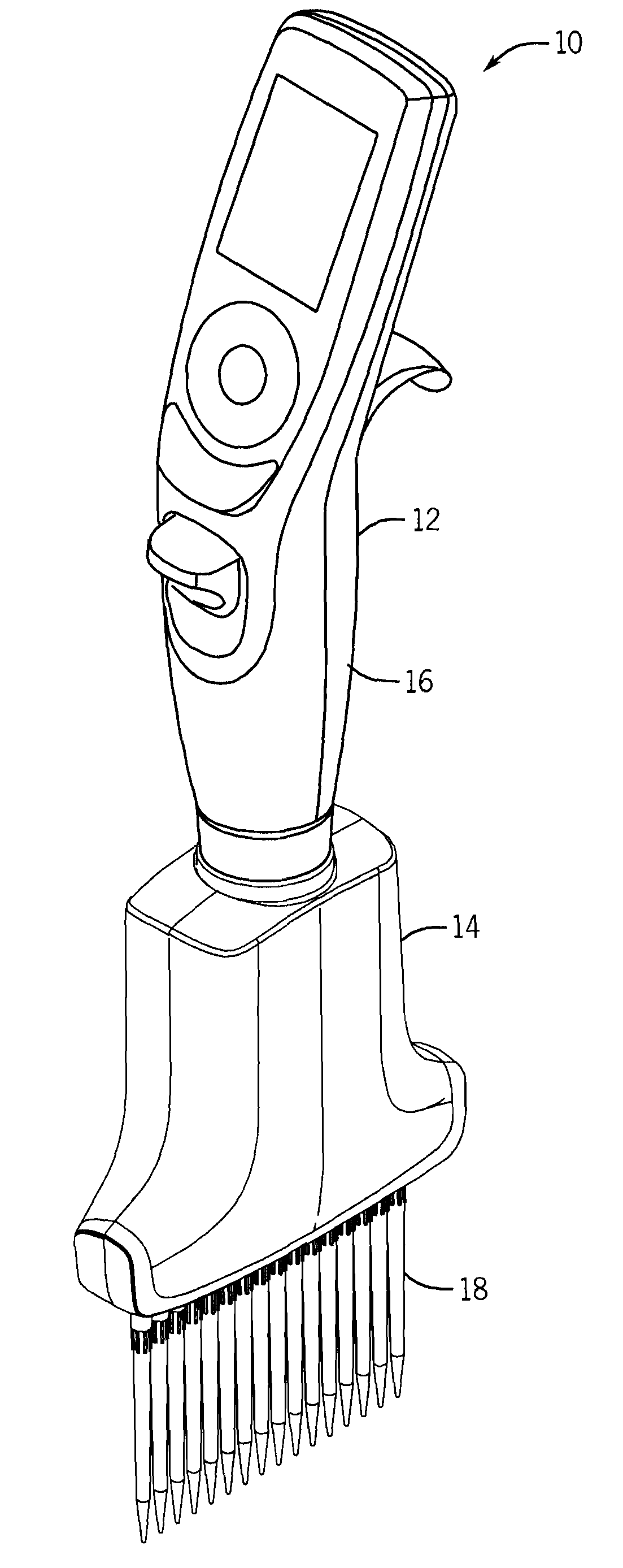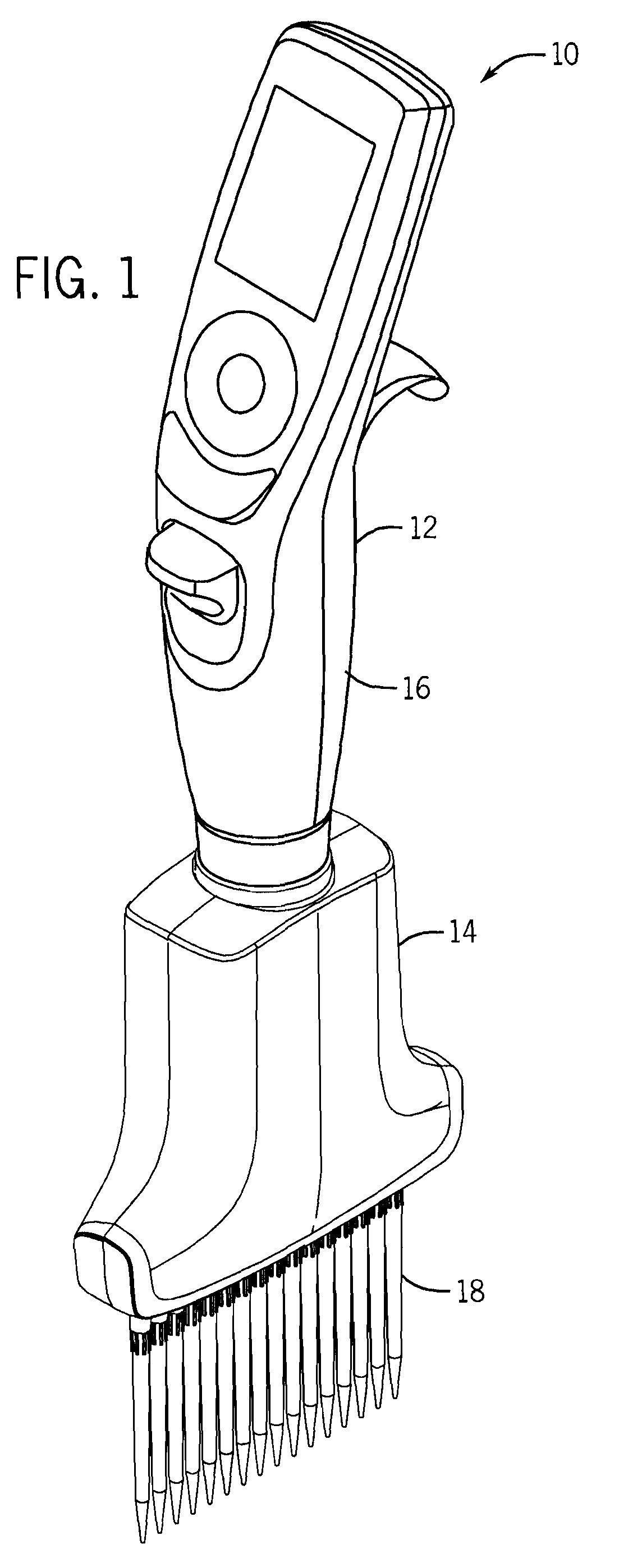Multi-channel electronic pipettor
- Summary
- Abstract
- Description
- Claims
- Application Information
AI Technical Summary
Benefits of technology
Problems solved by technology
Method used
Image
Examples
Embodiment Construction
[0033]FIG. 1 illustrates a hand-held, multi-channel electronic pipettor 10 constructed in accordance with the preferred embodiment of the invention. The pipettor 10 shown in FIG. 1, as well as the following FIGS. 2-11 illustrate a 16-channel pipettor 10 which has a center-to-center spacing of 4.5 mm between tips. The invention, however, is not limited to pipettors having 16 channels, and while it is preferred that the center-to-center spacing between the tips be commensurate with normal industry standards such as 4.5 mm or 9 mm, the invention is not limited thereto.
[0034]The multi-channel pipettor 10 includes an upper handle assembly 12 and a lower multi-channel assembly 14. As shown in FIG. 2, it is preferred in accordance with one aspect of the invention that the angular position of the lower multi-channel assembly 14 be adjustable, with respect to the orientation of the upper handle assembly 12. The upper handle assembly 12 includes a housing 16 that is designed to be held in the...
PUM
 Login to View More
Login to View More Abstract
Description
Claims
Application Information
 Login to View More
Login to View More - R&D
- Intellectual Property
- Life Sciences
- Materials
- Tech Scout
- Unparalleled Data Quality
- Higher Quality Content
- 60% Fewer Hallucinations
Browse by: Latest US Patents, China's latest patents, Technical Efficacy Thesaurus, Application Domain, Technology Topic, Popular Technical Reports.
© 2025 PatSnap. All rights reserved.Legal|Privacy policy|Modern Slavery Act Transparency Statement|Sitemap|About US| Contact US: help@patsnap.com



